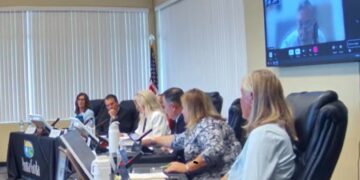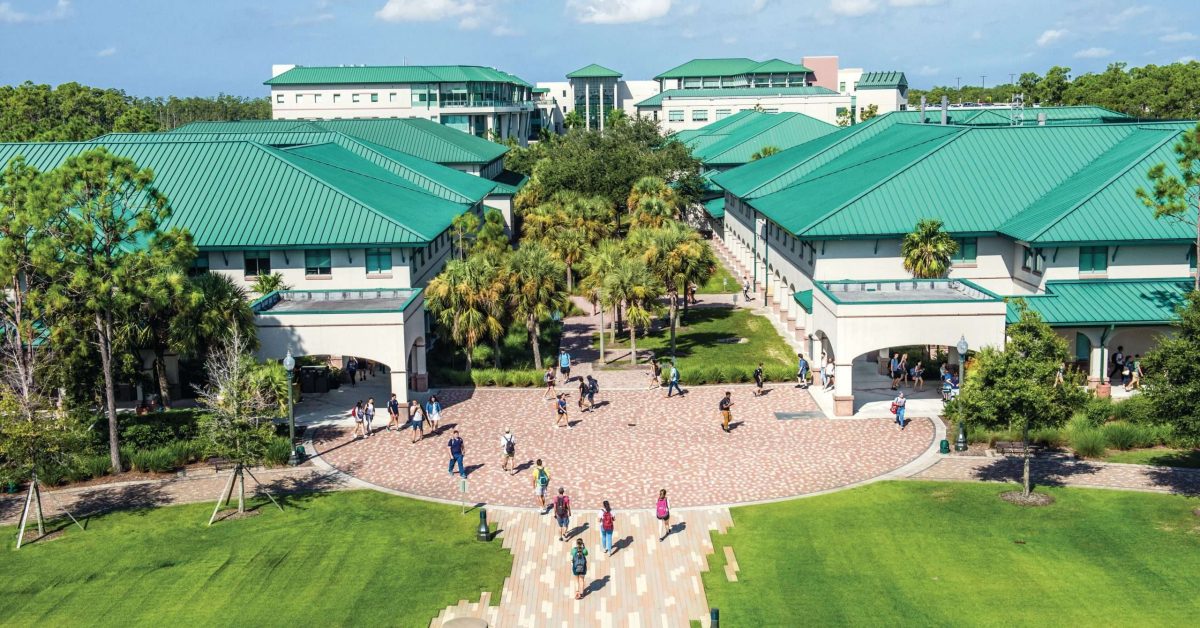It’s no longer news that Florida’s population is increasing, and it doesn’t seem to be slowing down anytime soon. Whether because the state had a shorter lockdown period during the height of COVID-19 compared to other states, or simply love for our sunshine and beaches, people are flocking to Florida. According to the United States Census Bureau, between 2020 and 2021 Lee County’s population increased 3.6%, and Collier County’s population increased 2.7%.
This increase in population leads to certain obvious issues—traffic, for example—that call the capacity of our infrastructure into question. However, some issues are less obvious; many might not realize that our educational institutions are also being affected.
During the fall of 2021, when many colleges and universities were seeing a decline in applications, Florida Gulf Coast University brought in the largest freshman class in its history with 3,141 freshman students, said Lisa Johnson, FGCU associate vice president for enrollment management.
Leading up to that school year, “our admissions staff stayed open and available … it was tremendously successful,” Johnson says. In 2021, FGCU had 16,743 freshmen applications; this year it received 18,617 applications, an 11.2% increase.
In some parts of the country, students may be finding it unexpectedly difficult to get into universities because of changes in population and COVID-19’s societal effects. Locally, that is not the case for Southwest Florida schools. For FGCU, Florida students are the priority. About 39% of FGCU’s student population comes from Lee, Collier, Brevard and Palm Beach counties, and only about 10% of each class is from out of state.
“There is a place for Florida residents here; they don’t have to worry about us not having a space for them,” Johnson says.
Even skyrocketing rent prices aren’t a deterrent for prospective FGCU students, as the university can house students for all four years of their college career. The housing options it offers evolves with the students as they get older, Johnson said, from freshmen-specific buildings to upperclass housing that’s basically like an apartment.
“We are trying to make sure we meet students’ needs,” Johnson says.
This year, more Fort Myers High School graduating seniors applied to colleges in general, said senior counselor Angela Higginbotham. Typically, the school sees about 75% of its seniors apply to college, but this year it also saw an increase in students applying to technical schools.
Many Fort Myers High School students go on to attend FGCU, and do so through the bright futures scholarship program that pays for tuition and book costs, senior counselor Melissa Hendrix said. Numerous students also apply to Florida State University and University of Florida, which have always had high competition for being accepted, she added.
Hendrix and Higginbotham still have the same advice for high school students going through the college application process: Make sure to hit application deadlines, remember financial aid is first-come, first-served and continue to keep a rigorous course load in students’ senior year.
They also suggest quality over quantity, meaning find something that makes students stand out and focus on that—having a leadership role in a club or community organization, for example.
“You don’t have to be in everything, but pick a few things and do them well,” Hendrix says.
Collier County Public Schools graduating seniors have been fairly consistent compared to years past, although they have seen an increase in rejections from Florida State University, according to Allison Ferraro, coordinator of school counseling grades 9-12. The school has also seen a slight increase in students attending technical schools; Ferraro said that isn’t a new phenomenon, but this year, the students have seemed to tell them sooner and start out on the technical school path instead of that being a secondary option.
More graduating seniors in Collier County have also decided to stay closer to home this year.
“One student got accepted with a scholarship to a university in Colorado, but they chose to stay,” Ferraro says.
Every student has a unique situation, she said, but there are many factors that could explain why students are staying closer to home. The cumulative effects of the past two years could be contributing—“These students are resilient, with what they have gone through with the pandemic,” Ferraro says—but it could also be because they do have more local options here in SWFL.





